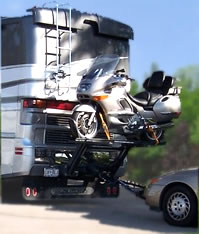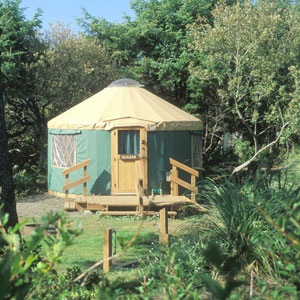
The Congressional Super Committee. They are figuring out how to save our Way of Life by next week. Figure the odds. Photo Getty Images.
I dunno. Maybe there is hope.
Some rumblings have emanated from the super-secret Super Committee has precisely nine days to find a $1.2 trillion bucks in budget savings or else a draconian trigger whacks discretionary funding across the Executive branch. Should that happen, the government accounts in Defense and the Intel Community on which my comrades and I depend for a living are going to be savaged.
If it happens, that is likely to make for a bleak Christmas.
Thankfully, this is a town of smoke and mirrors and hot air that moves the mystery around. The latest is that the deficit reduction panel is constructing an “escape hatch” from the rigid binary choice that theoretically limits what the legislators can do.
We have all sorts of cool things in Washington- “lock boxes,” “escape hatches,” Congressional bodies with Super Powers. It is awesome.
Under the novel trial balloon floated this weekend on the hot air is the notion that there could be an accord on revenue levels (that means “taxes”) but delay for a year the tough decisions about exactly what would be done to the impenetrable and Byzantine Tax Code.
More power to the Panel, and more power to the post Berlusconi-government of Italy who has installed sober technocrats to avoid default, which could, in turn, bring down the banks on this side of the Atlantic.
I hope they can both do something constructive, though it is beyond hope that a compromise on Italian austerity and US taxes and spending can be brokered with any specificity by Turkey Day.
I was thinking about that on my long drive in the country this weekend, and the consequences of big cuts to the contracts I manage. The impact to those on fixed income- a class of citizens that I am afraid I am headed to join- is going to make my current lifestyle frankly unsustainable.
There were a bunch of other citizens out on Virginia’s scenic highways. There were rattletraps out there, and there were fancy SUVs hurtling to and from Charlottesville and points south to the Carolinas and Florida. There were also the snowbirds, the people in those fancy Ford F-250 trucks with the goose neck trailer attachment and the long trailer behind and a little sedan hooked to the back of it.

Enterprising Nomad seen on Virginia Rt-29, completely covered with spare sedan and motorcycle. Photo American Eagle
That is one approach, anyway, and I saw all of them. Buses in a variety of sizes and levels of luxury. Smaller camping trailers, too, but what they had in common was a white guy at the wheel with his knuckles white as the four-wheelers like the Bluesmobile rocketed by.
I get the concept. Hang on where you have a permanent residence until it gets too cold, and then just pack up and head south. I could get behind that. Michigan is lovely from May to October, but then when the cold winds blow it is dark and cold and frankly unsustainable by anyone sane.
I understand why Raven and Big Mama retired up there, but they appeared to survive the winters by retreating into their zone of comfort in the master bedroom.
Suppose, I thought, I had to slash costs to the bone. Get rid of the property and see how to make existing resources stretch to accommodate a new and more austere reality.
The Recreational Vehicle lifestyle has its proponents, but I am not sure an dinosaur dependent on fossil fuel and white knuckles is where I want to be. Raven had wanted to refit a school bus one strange summer, for wandering plans best known to himself.
Parking the Bluesmobile out in front of Big Pink when the drive was over, I thought that would be about as much as I could handle on the road. Suppose
What did the nomads of old do, before the Airstream Era dawned?
In North America, there was the ti-pi, and good old-fashioned canvas tents. But there is a better answer, one that equipped the Golden Hoard of the Mongols.
I am thinking, naturally, of the yurt.
The word comes from the Russian Yurta, which describes a felt-covered circular structure with trellis walls reinforced to support the ribs of the roof.
The roof is supported by a conical or domed frame consisting of a number of ribs radiating from a central wooden wheel to the top of the wall trellis. The yurt is traditionally covered with felt, made by beating and rolling wet sheep fleece.
The latter sounds like fun, but I am betting there are vendors who will take the last step out of the process.
There are three main types of traditional yurts:
Kirgiz (bent-wood roof poles and crown and a domed overall shape)
Uzbek (two-tiered with a pointed roof and two layers of wall section placed one on top of the other.)
Kalmuk (straight roof poles, a heavy timber crown, often supported by two upright poles, and fitted with a wooden door. Also known as a “ger”).
The last is the type that the hardy Mongolians used to scourge central Asia and threaten Europe, and that is the sort of patrimony I am looking for.

Could there be a Kalmuk ger in our future? Only the Supercommittee and the new Italian government know for sure. Photo Oregon State Government.
The Ger is perfectly suited to a nomadic lifestyle, and has been tested for thousands of years in the world’s most inhospitable climates, with high winds, rain, snow and temperatures that routinely fall to -58ºF.
That would work in Michigan, but I am really thinking about a yurt that would fit in the bed of a pick-up truck, move south with a languid sort of imperative and have an ice-maker.
More on those requirements tomorrow, since it is Monday, and for the moment, I have a job to go to.
Copyright 2011 Vic Socotra
www.vicsocotra.com
